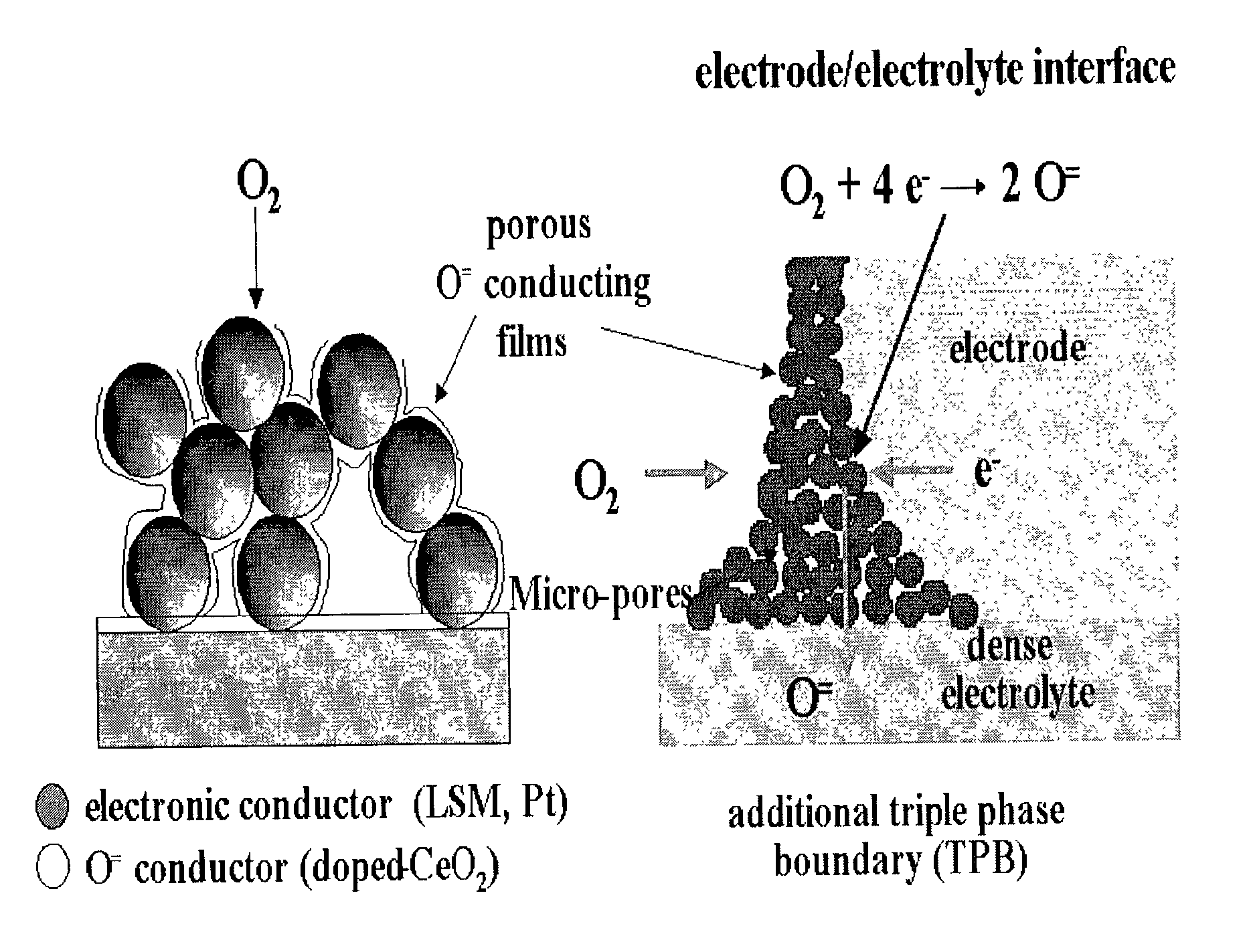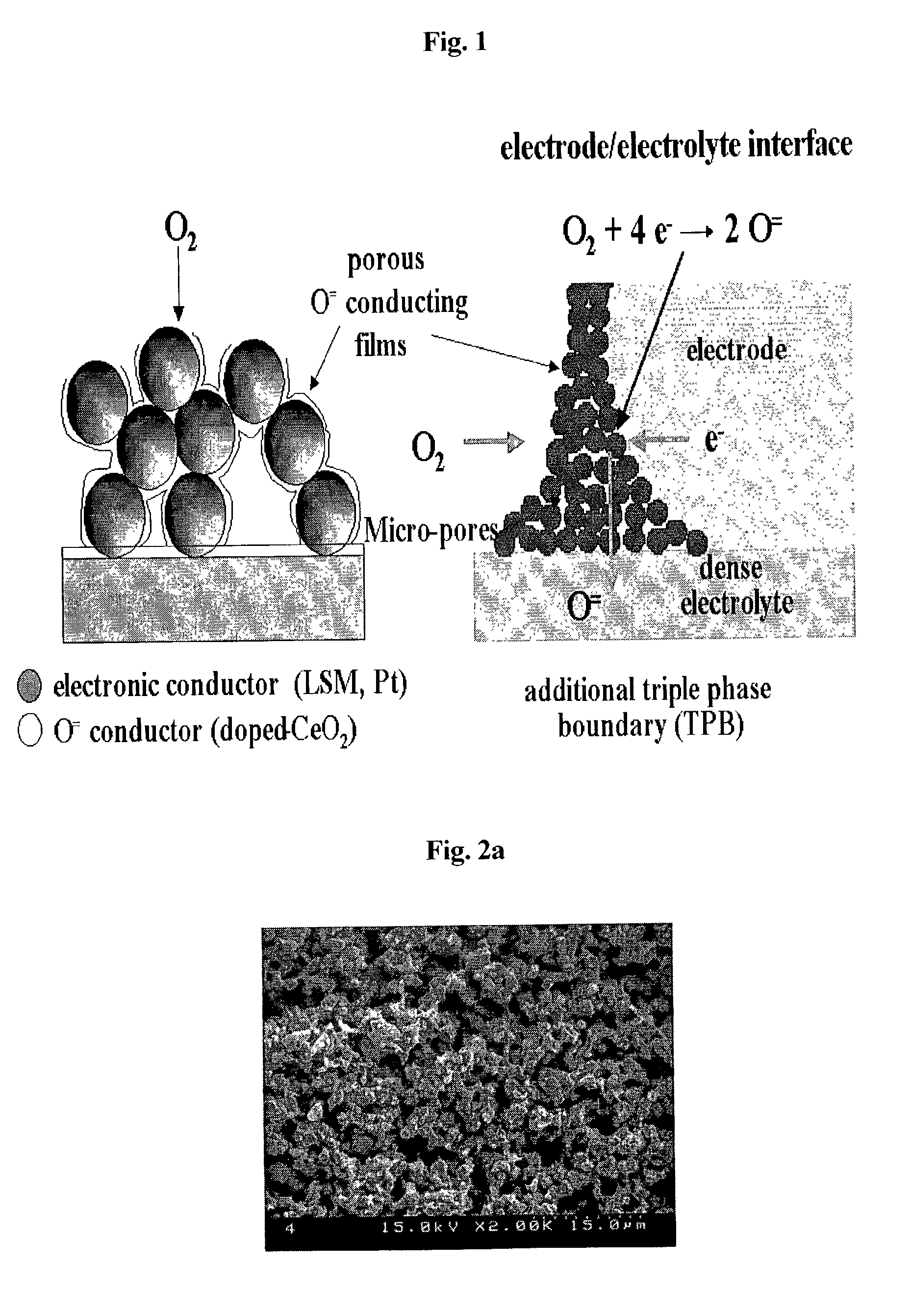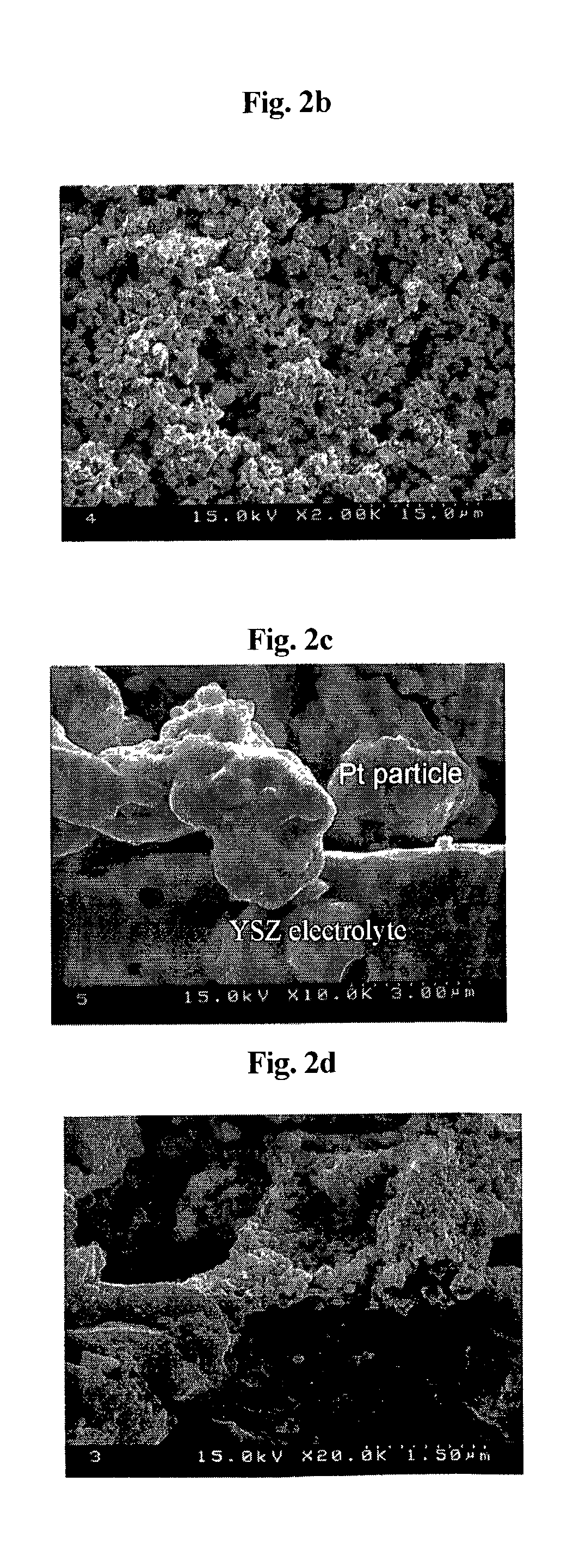Electrode having microstructure of extended triple phase boundary by porous ion conductive ceria film coating and method to manufacture the said electrode
a technology of porous ion conductive ceria and microstructure, which is applied in the field of electrodes, can solve the problems of reducing active area, degrading cell performance, and difficult to find an interconnect material which is easy to process and low cost, and achieves the effect of enhancing electrode performan
- Summary
- Abstract
- Description
- Claims
- Application Information
AI Technical Summary
Benefits of technology
Problems solved by technology
Method used
Image
Examples
example 1
[0033]Preparation of SDC Sol
[0034]First, 50 g ceria sol with a particle size of 10 nm (20 wt % in H2O, Alfa AESAR, USA) was diluted in 100 g distilled water, preparing diluted sol. 6.45 g Sm nitrate hexahydrate (Sm(NO3). 6H2O, 99.9%, Aldrich, USA) was dissolved in 50 g distilled water, preparing a Sm nitrate solution. To the diluted sol (150 g) was added the Sm nitrate solution, drop by drop, while stirring, preparing resultant Sm0.2Ce0.8O2 sol (SDC sol).
example 2
[0035]Manufacture of SDC Sol-coated LSM Electrode and Testing of Electrode
[0036]A prefabricated YSZ electrolyte disc deposited with LSM electrodes was subjected to dip coating in the SDC sol prepared as in Example 1, forming SDC coating film on the electrode / electrolyte structure. The LSM electrodes were previously fabricated in such a way that the disc-shaped YSZ electrolyte with 25 mm in diameter and 1 mm thickness was coated with the electrodes, followed by calcination at 1100° C. for 2 hrs. The dip coating process was performed for various times between 30 sec and 10 min. It was found that the optimal dip coating time is 1 min.
[0037]FIGS. 2a to 2d are scanning electron micrographs (SEM) showing electrode microstructures, the LSM electrode being dip coated with SDC sol, thereby SDC coating film being formed on the electrolyte / electrode structure. As can be seen in FIGS. 2a to 2d, the electrode microstructures according to the invention were formed using a sol-gel coating process ...
example 3
[0049]Ni Electrode Testing
[0050]Among components of a SOFC, the most unstable component upon sintering at high operating temperatures is the anode material, porous Ni. Ni was coated with SDC sol, followed by thermal treatment at 1000° C. for 3 hrs. After such treatment, the Ni electrode was tested for linear shrinkage and porosity.
[0051]The electrode having a microstructure according to the invention is a configuration in which oxygen ion conductive film was formed on the porous electrode, as shown in FIG. 1. This electrode having a microstructure is derived from an opposite conception to that of Virkar et al.'s method (U.S. Pat. No. 5,543,239). According to the Virkar method, the electrocatalyst is placed on the porous electrolyte, thereby extending a triple phase boundary in which an electrochemical reaction occurs. The Virkar method is advantageous in terms of extension of the triple phase boundary when the particles of electrocatalyst or electrode are fine. Despite such an advan...
PUM
 Login to View More
Login to View More Abstract
Description
Claims
Application Information
 Login to View More
Login to View More - R&D
- Intellectual Property
- Life Sciences
- Materials
- Tech Scout
- Unparalleled Data Quality
- Higher Quality Content
- 60% Fewer Hallucinations
Browse by: Latest US Patents, China's latest patents, Technical Efficacy Thesaurus, Application Domain, Technology Topic, Popular Technical Reports.
© 2025 PatSnap. All rights reserved.Legal|Privacy policy|Modern Slavery Act Transparency Statement|Sitemap|About US| Contact US: help@patsnap.com



